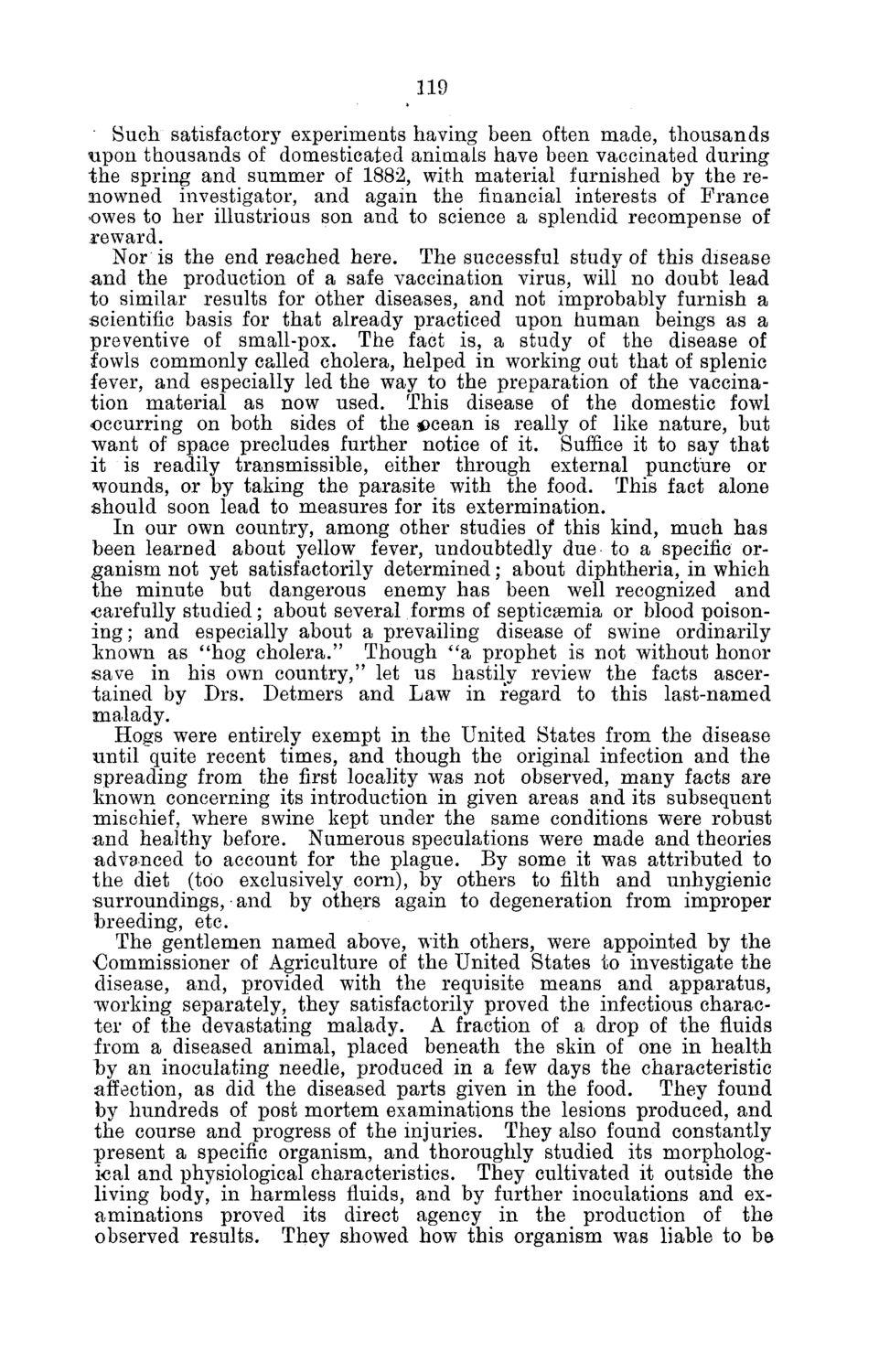| |
| |
Caption: Board of Trustees Minutes - 1882
This is a reduced-resolution page image for fast online browsing.

EXTRACTED TEXT FROM PAGE:
119 Such satisfactory experiments having been often made, thousands apon thousands of domesticated animals have been vaccinated during the spring and summer of 1882, with material furnished by the renowned investigator, and again the financial interests of France owes to her illustrious son and to science a splendid recompense of reward. Nor is the end reached here. The successful study of this disease <and the production of a safe vaccination virus, will no doubt lead to similar results for other diseases, and not improbably furnish a scientific basis for that already practiced upon human beings as a preventive of small-pox. The fact is, a study of the disease of fowls commonly called cholera, helped in working out that of splenic fever, and especially led the way to the preparation of the vaccination material as now used. This disease of the domestic fowl occurring on both sides of the £>cean is really of like nature, but want of space precludes further notice of it. Suffice it to say that it is readily transmissible, either through external puncture or wounds, or by taking the parasite with the food. This fact alone should soon lead to measures for its extermination. In our own country, among other studies of this kind, much has been learned about yellow fever, undoubtedly due to a specific organism not yet satisfactorily determined; about diphtheria, in which the minute but dangerous enemy has been well recognized and •carefully studied; about several forms of septicaemia or blood poisoning ; and especially about a prevailing disease of swine ordinarily known as "hog cholera." Though "a prophet is not without honor save in his own country," let us hastily review the facts ascertained by Drs. Detmers and Law in regard to this last-named malady. Hogs were entirely exempt in the United States from the disease until quite recent times, and though the original infection and the spreading from the first locality was not observed, many facts are known concerning its introduction in given areas and its subsequent mischief, where swine kept under the same conditions were robust and healthy before. Numerous speculations were made and theories advanced to account for the plague. By some it was attributed to the diet (too exclusively corn), by others to filth and unhygienic •surroundings, and by others again to degeneration from improper breeding, etc. The gentlemen named above, with others, were appointed by the Commissioner of Agriculture of the United States to investigate the disease, and, provided with the requisite means and apparatus, working separately, they satisfactorily proved the infectious character of the devastating malady. A fraction of a drop of the fluids from a diseased animal, placed beneath the skin of one in health by an inoculating needle, produced in a few days the characteristic affection, as did the diseased parts given in the food. They found by hundreds of post mortem examinations the lesions produced, and the course and progress of the injuries. They also found constantly present a specific organism, and thoroughly studied its morphological and physiological characteristics. They cultivated it outside the living body, in harmless fluids, and by further inoculations and examinations proved its direct agency in the production of the observed results. They showed how this organism was liable to ba
| |